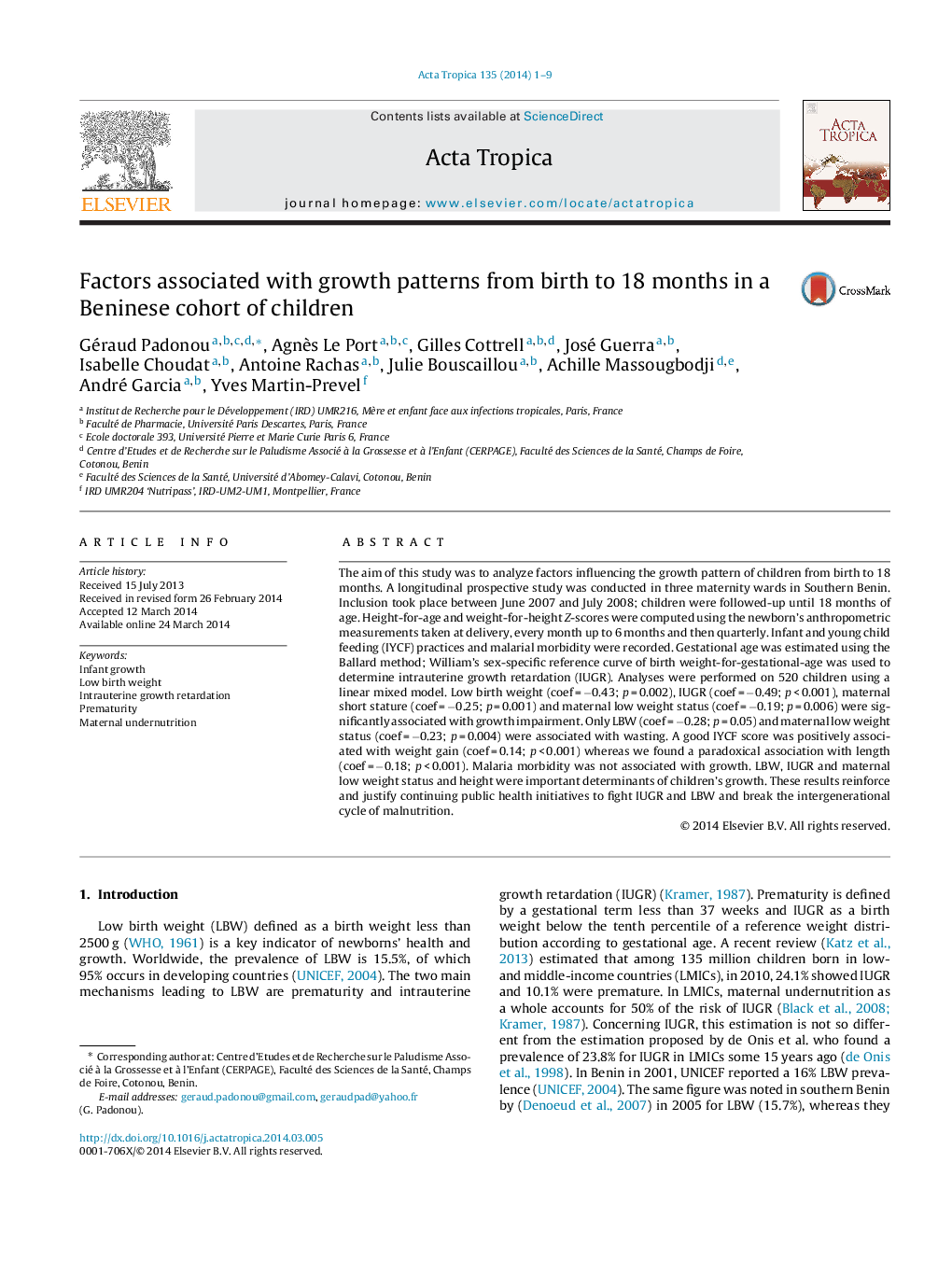| کد مقاله | کد نشریه | سال انتشار | مقاله انگلیسی | نسخه تمام متن |
|---|---|---|---|---|
| 3393826 | 1592788 | 2014 | 9 صفحه PDF | دانلود رایگان |
• We have analyzed the growth 0–18 months of 520 newborns using HAZ, WHZ score in Benin.
• LBW, IUGR, maternal low weight status and short stature were related to lower HAZ.
• LBW, maternal low weight status were associated with lower WHZ.
• Good IYCF score was positively related to WHZ but negatively associated with HAZ.
• Public health actions to fight LBW and maternal undernutrition should be continued.
The aim of this study was to analyze factors influencing the growth pattern of children from birth to 18 months. A longitudinal prospective study was conducted in three maternity wards in Southern Benin. Inclusion took place between June 2007 and July 2008; children were followed-up until 18 months of age. Height-for-age and weight-for-height Z-scores were computed using the newborn's anthropometric measurements taken at delivery, every month up to 6 months and then quarterly. Infant and young child feeding (IYCF) practices and malarial morbidity were recorded. Gestational age was estimated using the Ballard method; William's sex-specific reference curve of birth weight-for-gestational-age was used to determine intrauterine growth retardation (IUGR). Analyses were performed on 520 children using a linear mixed model. Low birth weight (coef = −0.43; p = 0.002), IUGR (coef = −0.49; p < 0.001), maternal short stature (coef = −0.25; p = 0.001) and maternal low weight status (coef = −0.19; p = 0.006) were significantly associated with growth impairment. Only LBW (coef = −0.28; p = 0.05) and maternal low weight status (coef = −0.23; p = 0.004) were associated with wasting. A good IYCF score was positively associated with weight gain (coef = 0.14; p < 0.001) whereas we found a paradoxical association with length (coef = −0.18; p < 0.001). Malaria morbidity was not associated with growth. LBW, IUGR and maternal low weight status and height were important determinants of children's growth. These results reinforce and justify continuing public health initiatives to fight IUGR and LBW and break the intergenerational cycle of malnutrition.
Maternal low weight status and IUGR had negative impact on growth directly and through LBW. Prematurity did so only through LBW. Feeding practices were determinants.Figure optionsDownload as PowerPoint slide
Journal: Acta Tropica - Volume 135, July 2014, Pages 1–9
